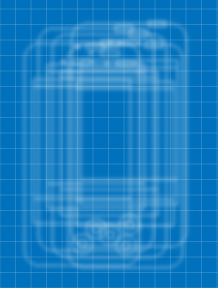Editor’s Note: Leonid (“Lenny”) Kravets is a patent attorney at Panitch, Schwarze, Belisario and Nadel, LLP in Philadelphia, PA. Lenny focuses his practice on patent prosecution and intellectual property transactions in computer-related technology areas. He specializes in developing IP strategy for young technology companies and blogs on this topic at StartupsIP. Follow Lenny on Twitter: @lkravets and@startupsIP.
In the wake of Apple’s billion-plus dollar win in their patent suit against Samsung last week, much of the focus appears to be on the flaws in the patent system. Many argue that the suit involved patents that are “obvious,” and that Apple is a bully in enforcing them. These arguments show blatant disregard for the job of Patent Examiners in reviewing patent applications and prior art, and the jury in hearing and deciding the case, which listened to both sides of the arguments and decided that the patents are valid.
The obviousness argument highlights a misconception held by many about the patent system. Patent law requires that obviousness of a patent claim be considered at the time the invention was made. This means that the Patent Examiner considering a patent application must determine whether the invention would have been obvious as of the filing date (or possibly even earlier) of the patent application. It is irrelevant whether the invention is obvious when the patent is being examined, and is even more irrelevant whether the invention seems obvious many years after the invention has been brought to market. After-the-fact obviousness arguments being presented by many of the Internet commentators are therefore improper under the current patent law system.
The patents involved in Apple v. Samsung provide a perfect example of why this obviousness standard is proper. Perceptions of the state of the art (and therefore what is obvious) change quickly. For example, in 2007, when the BlackBerry was still king of the mobile market, many ridiculed Apple for the iPhone’s lack of a keyboard. Today, a phone with a physical keyboard is becoming rare. Therefore, I don’t think it is any stretch to say that Apple’s release of the iPhone revolutionized the mobile phone industry. This chart from AllThingsD’s John Paczkowski compares Samsung’s pre-iPhone selections to those that came after the iPhone’s release.
One of the jurors, Manuel Ilagan, pointed to this piece of evidence in support of the jury’s decision, saying that, “the e-mails that went back and forth from Samsung execs about the Apple features that they should incorporate into their devices was pretty damning to me. And also, on the last day, they showed the pictures of the phones that Samsung made before the iPhone came out and ones that they made after the iPhone came out….”
So why wasn’t Samsung able to prove obviousness? Granted patents are afforded a presumption of validity, making invaliding them more challenging. In such a high stakes case, it is likely that Samsung spent a great deal of time and energy trying to find prior art which would invalidate Apple’s patents. Despite their best efforts, the results of the case demonstrate that Samsung was ultimately unsuccessful in their search. It should be noted that this does not mean that relevant art does not exist, rather Samsung was simply unable to produce any such art that convinced the jury that Apple’s patents were invalid. Many believe that the jury was wrong on this point. However, given that the jury received extensive instructions on how to determine patent validity and had a chance to review all the evidence offered by both sides, their opinion on the validity of the patents was much more informed that most of us watching the case from the outside.
So what can startups take away from this decision involving two tech giants? For one, patents in the U.S. are incredibly valuable, and will continue to be valuable for the foreseeable future. Two, if you believe your technology holds any value, it is probably valuable enough to protect it through intellectual property rights. This is especially true where a startup is operating in a crowded space and producing innovations that may only be improvements over a competitor’s existing products or designs. As Apple demonstrated, these improvements – even if subtle – may be adopted and indeed even become commonplace in the startup’s market. As Benedict Evans so eloquently put on Twitter, “[t]he measure of Apple’s achievement: what was unimaginable in 2006 now seems so obvious that people claim Apple should have no patents.”
Finally, if you are a startup worrying about competitors suing you out of existence, consider Robert Scoble’s take on the Samsung decision, “I think this is actually a sizable win for Samsung. Why? It only cost $1 billion to become the #2 most profitable mobile company….I bet that RIM wishes it had copied the iPhone a lot sooner than it did. So does Nokia, and HTC and a raft of other manufacturers I bet. Samsung is a much healthier company than any of those BECAUSE it copied the iPhone.” So while as a patent attorney I never advocate knowingly infringing the patent rights of others, and patent licensing and purchase deals can avoid many of the troubles faced by Samsung (if Samsung had simply taken Apple’s license offer, their total cost would have been half the jury verdict), Samsung may still be in a better position having copied Apple and been found to infringe than if it had never copied at all.
Special thanks to patent attorney Joseph Holovachuk (@twitchuk) for his comments in drafting this article.
